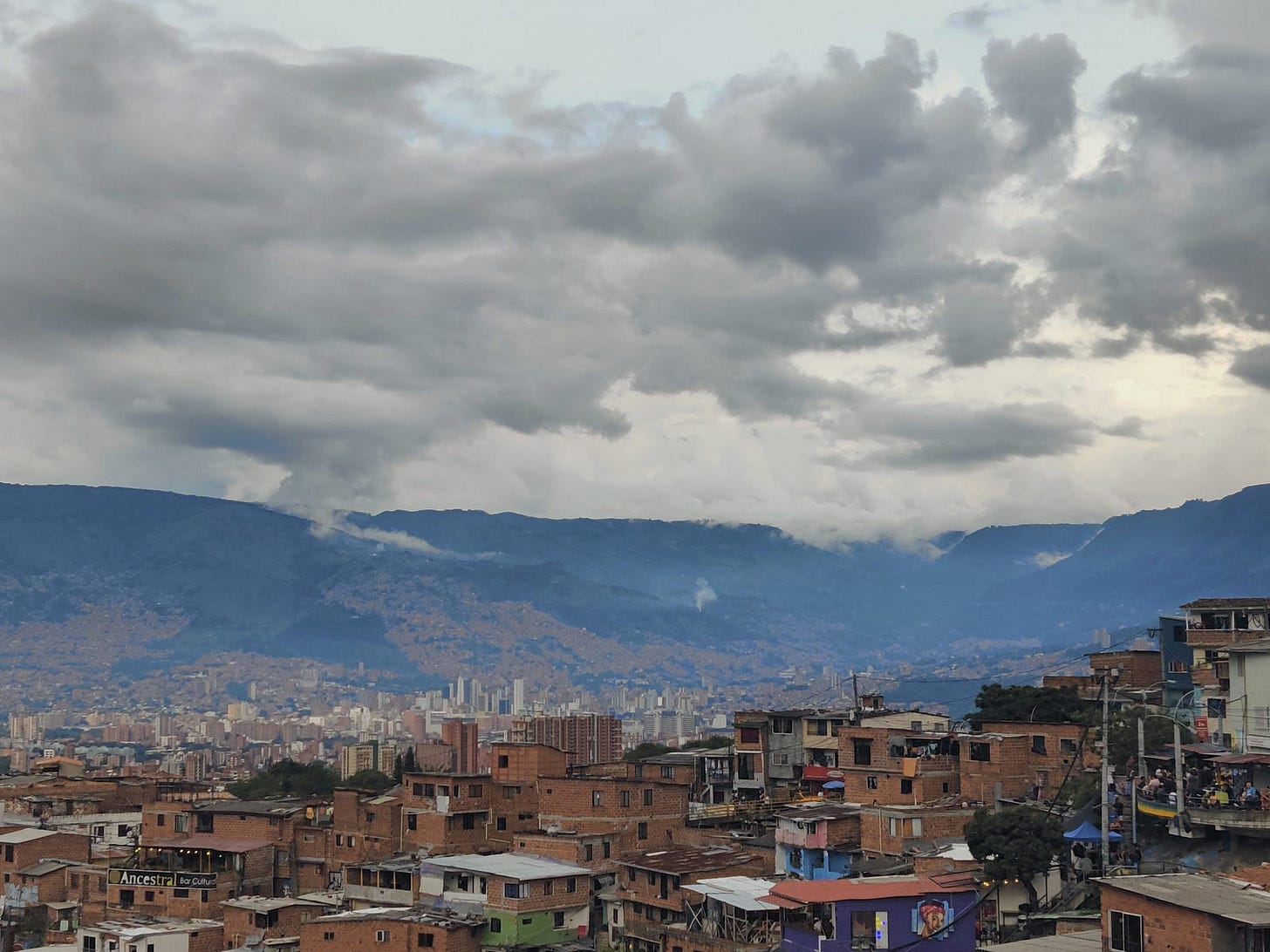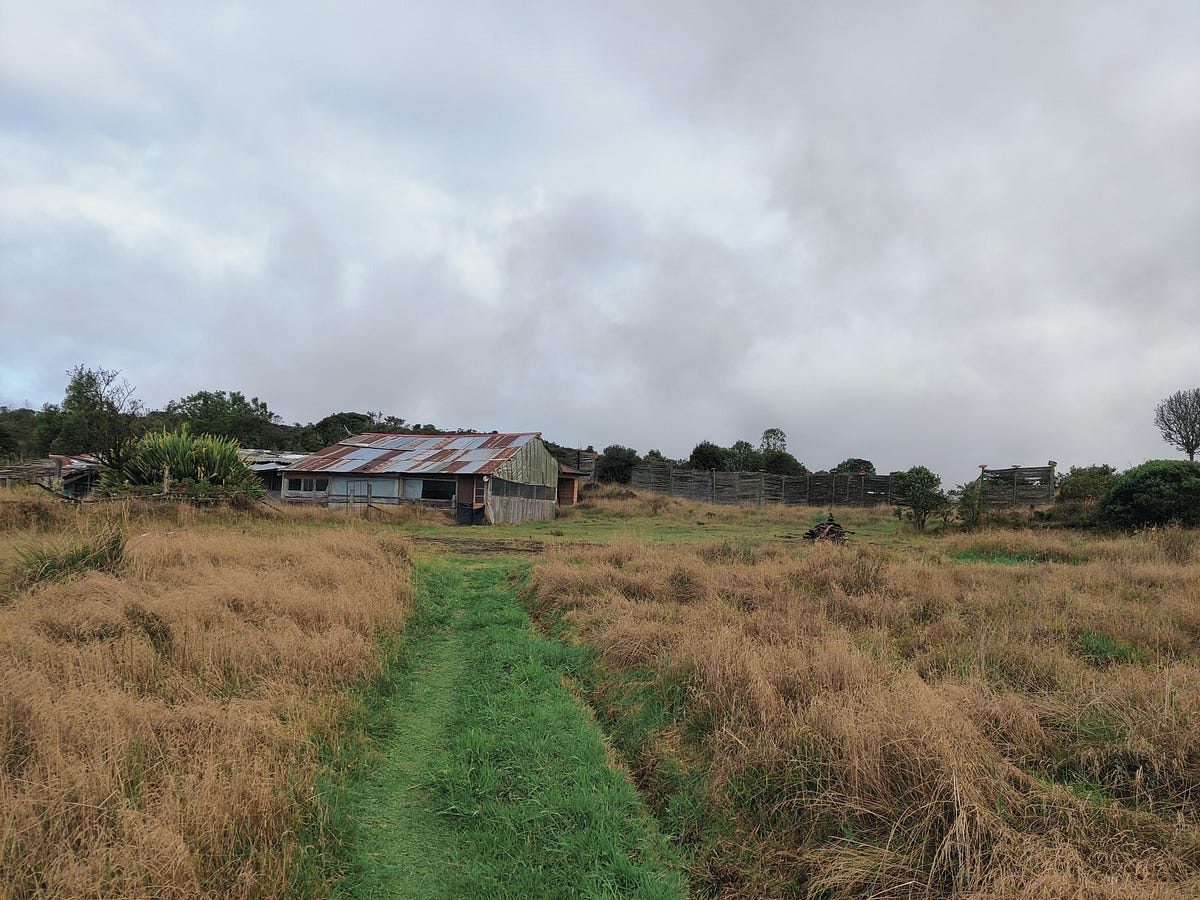Earlier this year, a work trip of mine required a layover in Bogotá. As a result, I decided to seize the opportunity and visit Colombia, which would effectively, but not technically, be my first time in another Latin American country outside of Brazil.
As a one year old, I was placed in the back of a green pickup truck and followed my parents around on a seventeen-thousand-kilometer journey from Belo Horizonte to Ushuaia that took forty days of intense driving. I’d say it’s a story for another time, but I remember nothing from it, so I can’t even tell it.
My plan in Colombia was simple: eat well, visit some tourist spots, and above all, hike up to one or some of the country’s great mountains. I’d planned to spend a few days in Bogotá and then take a bus to Salento, a town often used as a starting point for hiking up to volcanoes and mountains around 5000m high.
I had limited time in Colombia and wasn’t too concerned with cities — I was more interested in heading to the wilderness (or ice). And so, excited and with a heavy backpack containing a tent, a sleeping bag for up to -20°C, and a bunch more gear, I landed in Bogotá.
Yet, upon arriving at the hostel, I opened up the news and saw that a volcano was about to erupt, right in the park where I was planning on living my adventures.
The volcano was spewing smoke, and so the park was closed and nearby cities evacuated.
(For those curious, it never actually erupted, but they couldn’t have known that back then).
I was quite upset about the news.
I spent the rest of the first day and the whole second day looking for other parks where I could do something similar, only to discover that nothing in Colombia is easy.
What seems close is far, and entering national parks often requires guides, advance bookings, and other bureaucratic processes. In the end, I found a few things to do around Bogotá, like camping in an abandoned house —this time, an actual story for another day — but I couldn’t come up with a complete itinerary for my entire stay in the country.
And thus I decided to make the most of it and went out to explore Bogotá. I quickly learned there’s a certain rivalry between Bogotá and Medellín, but in my experience, it’s no rivalry at all, because everyone I met in Bogotá told me I should actually visit Medellín. On I went.
Medellín is an interesting city. It’s somewhat monochromatic, with many of its buildings and houses painted in a brown clay-ish color. The history of the narcos remains present in people’s lives but is well-camouflaged by the city’s architecture and tour guides.
I was near the Poblado neighborhood, which felt more European than anything. Fancy restaurants and nightclubs, with just as much English spoken on the streets as Spanish. I became friends with a German girl sleeping on the bed next to mine at the hostel, and joined her to visit the famous Comuna 13, perhaps the most famous tourist spot in Medellín.
Comuna 13 is a neighborhood in Medellín that has a dark history of violence and drug trafficking but is now a thriving community with a strong arts scene and a big tourist spot.
It is indeed a representation of solid efforts by the city of Medellín to improve the lives of its citizens, but the tour of the place felt a bit odd to me.
In Brazil, where I’m from, we face similar social issues as those present in Colombia, so the picture painted by guides at Comuna 13 (who were actually locals living there) of both the neighborhood and the city itself seemed too good to be true to me.
The way they spoke seemed… Choreographed.
It was in line with a lot of what you read online and hear about when visiting museums — but very different from the picture painted by locals you meet around.
And thus I decided I wanted to see the “real Medellín” and went to visit the center of town, alone, against the advice of most people I had met until then.
Arriving there, I encountered another reality. A lot of trash on the street, many homeless people, and an extremely precarious situation. I then committed to sitting down at the first bar I found to have a beer and chat with the locals.
I walked down the street a bit, and entered the first bar on the left. It had a low, purple-pinkish light, was small, and relatively full. The presence of this half-Finnish, half-Brazilian, 1.90m tall man quickly drew attention.
I headed to the bar, and a man sitting at the back stood up, moved some people around, and told me to sit at a table where a couple was sitting in front of dozens of empty beer bottles. Closely watched by everyone there, I bought my beer and sat down.
After sitting, the same man made some gestures, and two women in wearing small clothes sat next to me. The five of us talked for a bit, and when the two women were slightly distracted by a side conversation, the man in front of me looked at me, pointed to the two women, and repeatedly hit his left palm on his closed right fist, a symbol my Brazilian half recognized quite well.
I quickly understood where I was but continued the conversation a little longer. I mentioned that I was learning to dance salsa, and soon one of the women took me out to dance. Any practice was good for me.
At the end of the song, she brought me a beer, already opened.
That’s when I realized that this playful situation was actually potentially a dangerous one.
Colombia is perhaps the only country in the world where you hear more about men being drugged by women than the other way around. The drug of choice is often scopolamine, which turns a person into a kind of zombie, capable of withdrawing money from an ATM and remembering nothing the next day.
I met people to whom this happened and had been warned by almost every Colombian I spoke to for more than five minutes about the danger. In fact, earlier that day, I had spent the afternoon playing Cards Against Humanity with a group I met in the park, and received recommendations on places to dance salsa. Even though they were the ones recommending the places, they still made sure to tell me to be aware, not drink too much, and take good care of myself.
And so, as I received my beer I realized I needed to get out of there. I said I had an appointment to get to (I actually had a salsa class at the hostel), but received numerous affectionate protests asking me to stay longer.
Finally, I told my dance partner that I wanted to meet later (which wasn’t the case) and added her on WhatsApp. With that, I was permitted to leave.
Close call.
I actually had the audacity to ask her for a photo that I noticed a friend of hers had taken while we were talking. And so, I leave you with the message I received after leaving the brothel:
“Si queres me guardas es Luciana :)” (fake name)








